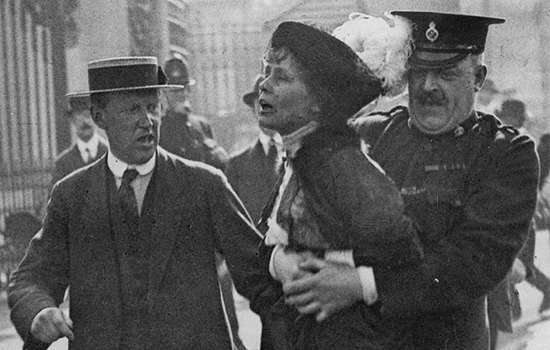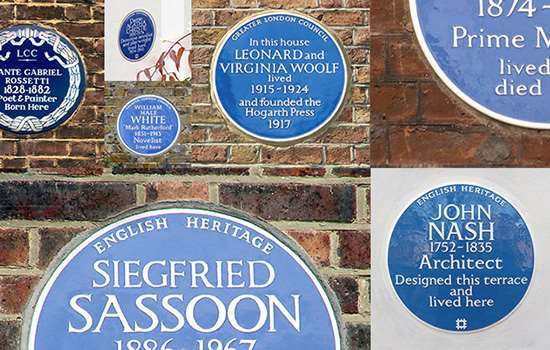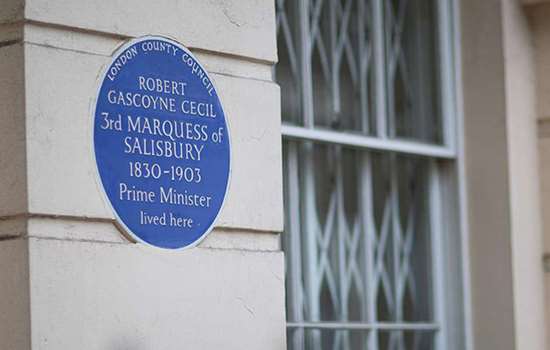Sir John Tenniel (1820–1914)
Plaque erected in 2025 by English Heritage at 52 Fitz-George Avenue, West Kensington, London, W14 0SW, London Borough of Hammersmith and Fulham
All images © English Heritage
Profession
Illustrator and cartoonist
Category
Cartoons and Illustration, Journalism and Publishing
Inscription
SIR JOHN TENNIEL (1820–1914), Artist and Cartoonist, Lived here.
Material
Ceramic
Notes
Formerly erected at Portsdown Road (later 6 Randolph Avenue) in 1930 by the London County Council
Sir John Tenniel was best known for illustrating Lewis Carroll’s Alice in Wonderland and Alice Through the Looking Glass. He was also an illustrator for Punch for 50 years. Tenniel is commemorated by a blue plaque at 52 Fitz-George Avenue, West Kensington.
John Tenniel was born in London in 1820, the son of a fencing and dancing master. Aged 20, Tenniel was wounded in the right eye by his father while practising fencing. He lost sight in this eye but hid his disability from his father to save him from guilt.
Tenniel attended the Royal Academy for a time but was largely self-taught as an artist. He was famously shy and had a remarkable memory, so preferred not to draw from models, though he spent hours at the zoo observing the animals.
In 1845, Tenniel was chosen to paint a fresco of St Cecilia at the Houses of Parliament. He was commissioned to draw illustrations for Charles Dickens’s Christmas book, The Haunted Man (1845), Aesop’s Fables (1848), Thomas Moore’s Lalla Rookh (1861) and Richard Barham’s Ingoldsby Legends (1864).
Punch and political cartoons
The Fables illustrations led to Tenniel being invited to become a Punch cartoonist in 1851. He was a political cartoonist for the magazine for 50 years, drawing over two thousand cartoons. Tenniel had married Julia Giani in 1854 but was devastated when she died of tuberculosis only two years later and never remarried. He devoted himself to his work and became the chief cartoonist at Punch in 1864.
Momentous political events, from the building and opening of the Suez Canal to the Hyde Park riots, were documented in Tenniel’s drawings. Some of Tenniel’s work also carries the mark of prejudices common at that time: his depictions of Jewish people, Black African people and Irish nationalists would be regarded as offensive today.
Tenniel sought to depict most politicians with decorum, though, and The Outlook suggested that prominent statesmen were more thrilled by having their cartoon in Punch than their image in the Royal Academy. One particularly famous illustration, ‘Dropping the Pilot’ (1890), referred to Kaiser Wilhelm II of Germany dismissing Bismarck, his chief minister. The cartoon alluded to a maritime pilot, who guides a ship through treacherous waters, being dismissed. After its publication, Tenniel received a commission to create a copy for Bismarck himself.
Alice Illustrations
Charles Dodgson (Lewis Carroll) had originally planned to illustrate Alice’s Adventures in Wonderland himself but was persuaded to collaborate with Tenniel. The two worked closely, if not happily, together. Tenniel’s illustrations drew closely upon the author’s sketches and text, but many of the most iconic aspects of Alice’s world, from the Hatter’s price tag to the now eponymous Alice band, were the artist’s creations.
Tenniel was so invested in the quality of the book that he suggested ‘The Wasp and the Wig’ chapter be removed because he found it too lacking in interest to illustrate, and he also ensured that the first edition was withdrawn due to poor print quality.
Tenniel’s illustrations were so iconic that when the text copyright to Alice’s Adventures expired and numerous artists attempted to produce their own images, they were widely condemned. Punch illustrator ET Reed produced a scathing cartoon mocking the ‘imitations’, and Arthur Rackham was so upset by such criticisms that he did not illustrate the sequel.
Later life and commemoration
When Queen Victoria knighted Tenniel in 1893, he was the first illustrator or cartoonist to ever be given such recognition. He was referred to by Punch colleagues as the ‘Black and White Knight’ and when he retired in 1901, his farewell banquet was presided over by Arthur Balfour, then leader of the House of Commons and shortly to become Prime Minister.
In 1909, Tenniel moved to 52 Fitz-George Avenue, West Kensington. The ground-floor mansion flat he took with his sister, Victoria, was a red-brick building located close to their nephew. The 1911 census records that they lived there with a cook (Lilian Fairbrother), a parlourmaid (Beatrice Edgington) and a companion/housekeeper (Inez Juster).
By this time, Tenniel had also lost sight in his left eye and was listed as being blind. He found the flat somewhat cramped and noisy, but this – his final home – is the only place that he resided that still survives today.
Tenniel had been commemorated with a plaque by the London County Council at his former home at 10 Portsdown Road (later 6 Randolph Avenue), Maida Vale, in 1930. The plaque is very unusual, being jade green in colour at the particular request of the homeowner, a Mrs Burgess. When the house was demolished in 1959, the order was given for the plaque to be destroyed. Instead, it was put into storage, where it remained until it was restored and installed at Fitz-George Avenue in 2025.


